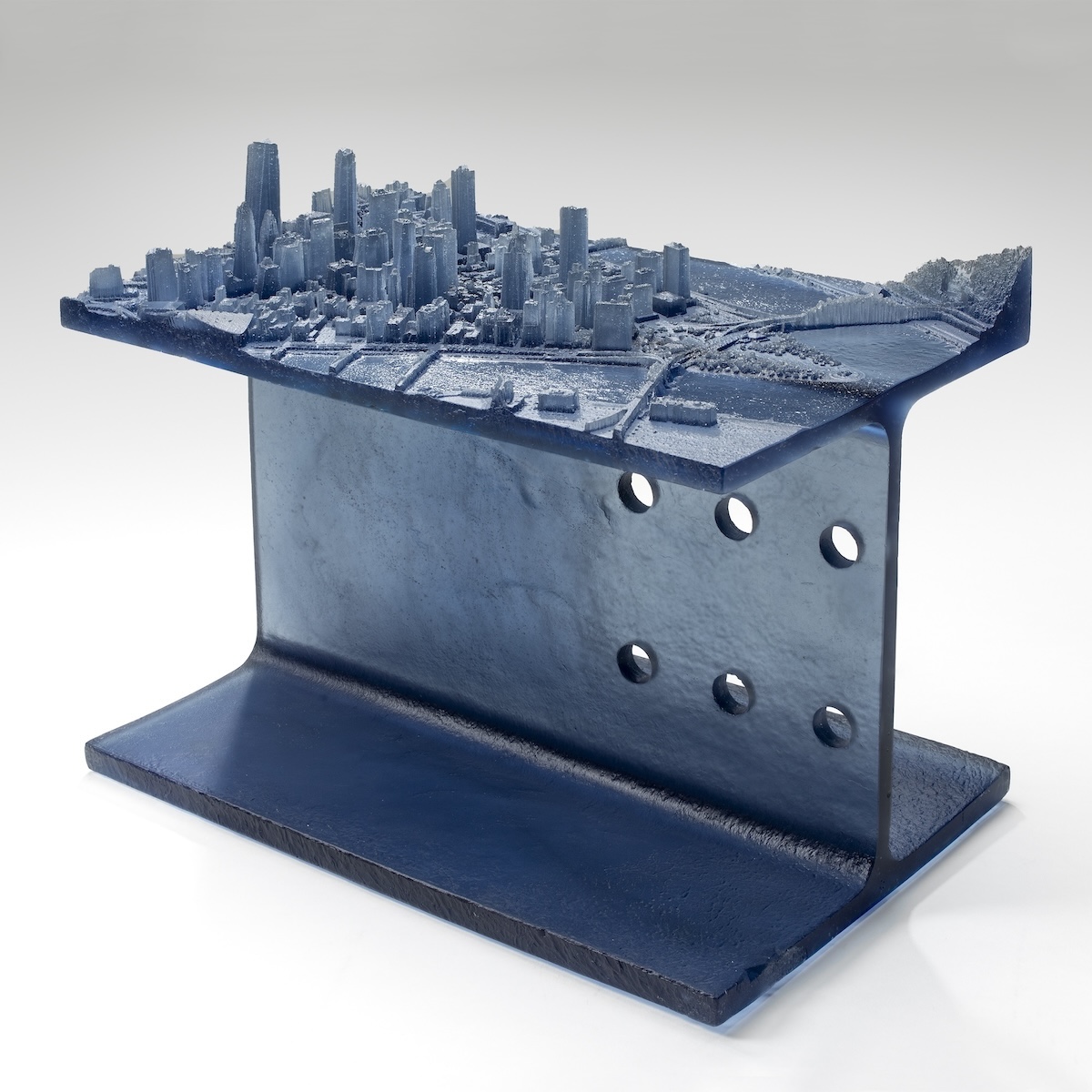
Recasting Pittsburgh
For the last 10 years, artist Norwood Viviano has been exploring the relationship between industrial growth and population changes in American cities through sculptures. His series of kiln-cast glass sculptures, titled Recast Cities, vividly captures iconic, ever-changing skylines while reflecting each city’s rich manufacturing history.
Viviano’s interests are rooted in his family’s migration from Sicily to the U.S. in the early 1900s and his own experience growing up in Detroit during the 1970s and 80s—a period marked by economic turmoil and mass migration due to changes in the auto industry.
“I initially wanted to examine the power dynamic between industry and the early immigrant population in the city of Detroit,” the artist tells My Modern Met. “This then led me to research other periods of history where major population shifts took place and their relationship to rapid industrial growth and decline.”
Viviano, who worked with historians, urban planners, demographers, climate scientists and statisticians to deepen his understanding of these shifting urban landscapes, explains, “I explore settlement patterns and the events that shaped them.” His glass sculptures represent each city, their stories of migration, and the fragility of urban populations.
For his Recasting Detroit sculpture, Viviano cast a miniature version of the city perched atop a glass car engine, symbolizing the pivotal role of the auto industry in Detroit’s history. Similarly, his Recasting Pittsburg cleverly features a glass beam as the base—mirroring the large beams typically used in construction—emphasizing Pittsburgh’s industrial history. Even Viviano’s Recasting New York piece features the city’s iconic skyline perched atop a stack of glass newspapers, symbolizing The New York Times and its significance in the city’s history.
“My installations and objects encourage individuals to make connections and ask questions about the interconnectivity between their and other communities,” says Viviano. “As an artist, I present data-driven information in a three-dimensional format using traditional craft materials in ways that allow viewers to place themselves in the work. By representing thousands of individual people as points in space, viewers can locate when and where they or someone they knew lived in a particular city.”
Each cityscape begins with 3D scans, which are then combined with objects such as a car engine to create a rubber mold. From this mold, a wax replica is created, which burns away after it’s filled with glass and fired in a kiln at 1550 degrees Fahrenheit.
“I find myself looking at the world as a surveyor—telling stories through objects,” says Viviano. “The evolution of physical environments parallels the movement of peoples and helps me further understand questions raised in my formative years growing up in the landscape of Detroit.”
Check out the artist’s Recast Cities series below and find more work on Viviano’s website.
Norwood Viviano’s Recast Cities series features kiln-cast glass sculptures that capture the iconic skylines of U.S. cities.
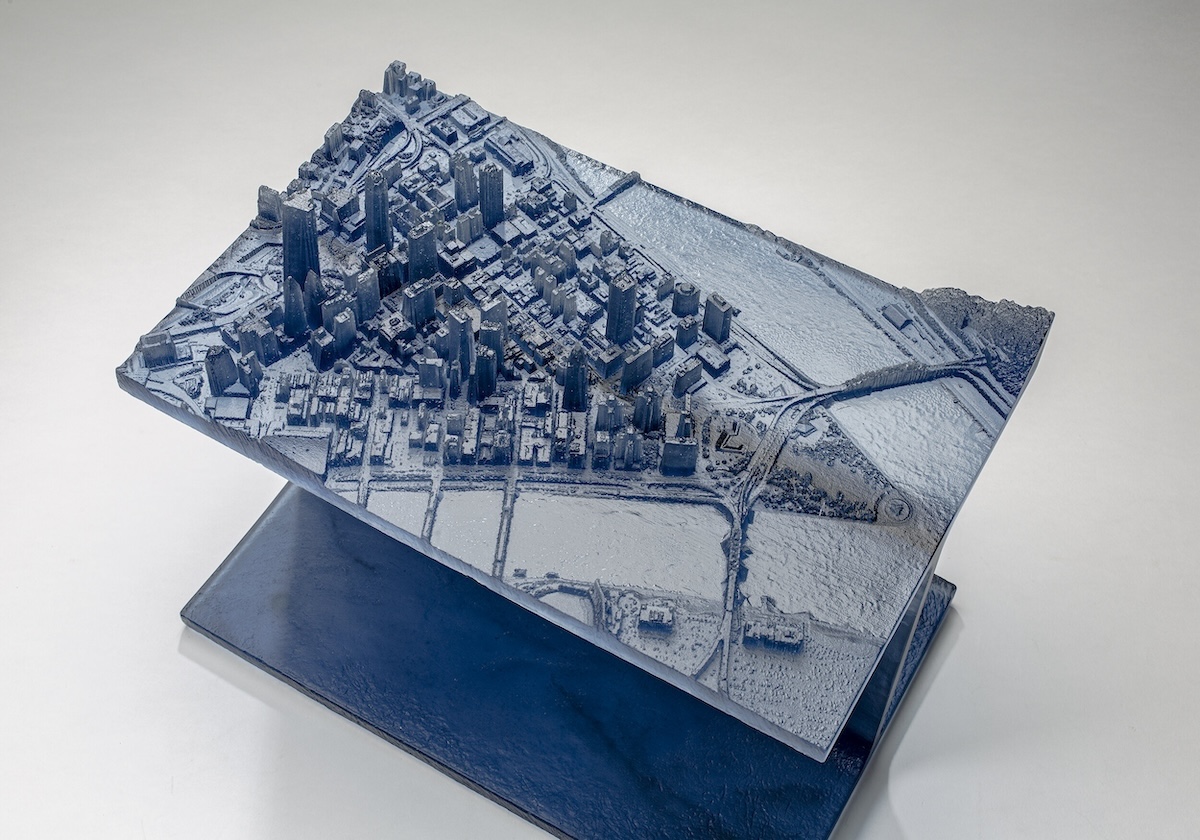
Recasting Pittsburgh (detail)
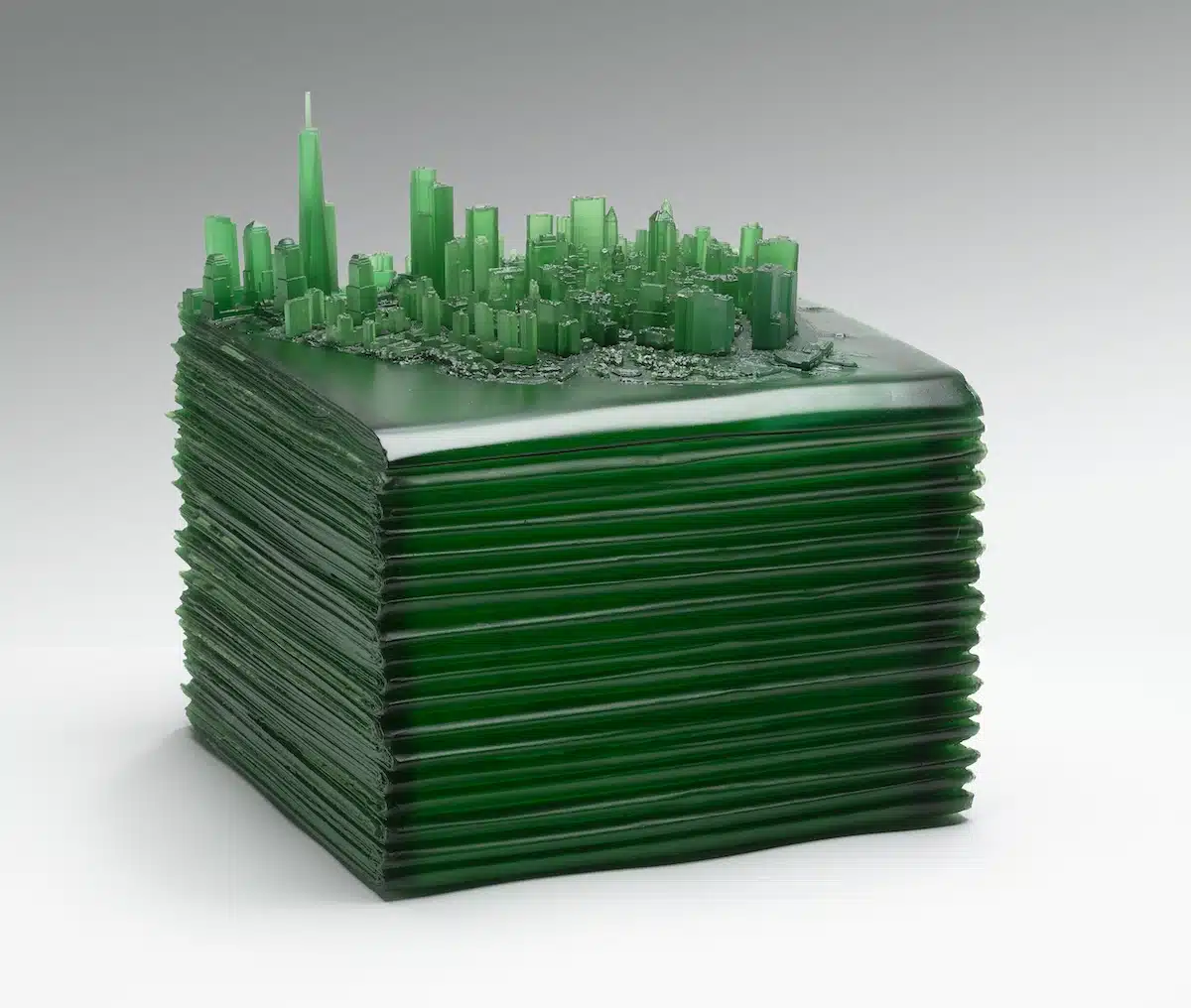
Recasting New York
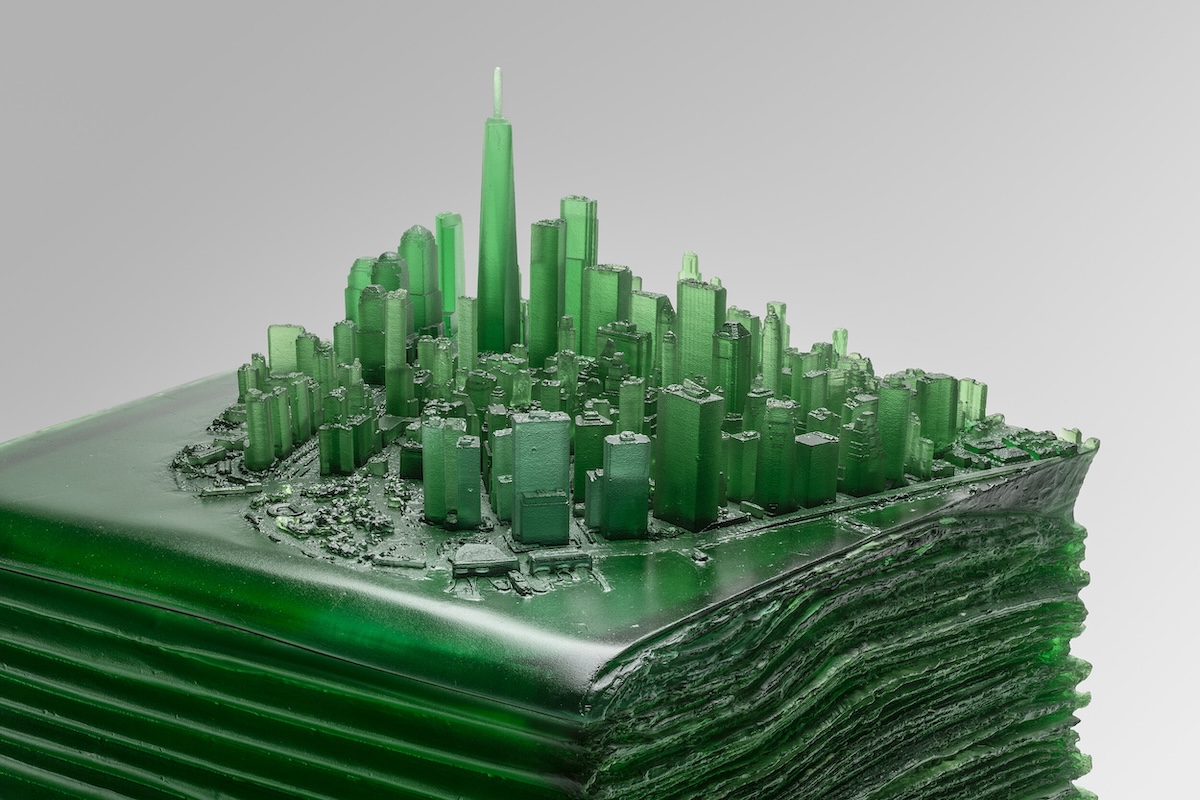
Recasting New York (detail)
Each cityscape is cast to sit above an object that represents the location’s industrial past.
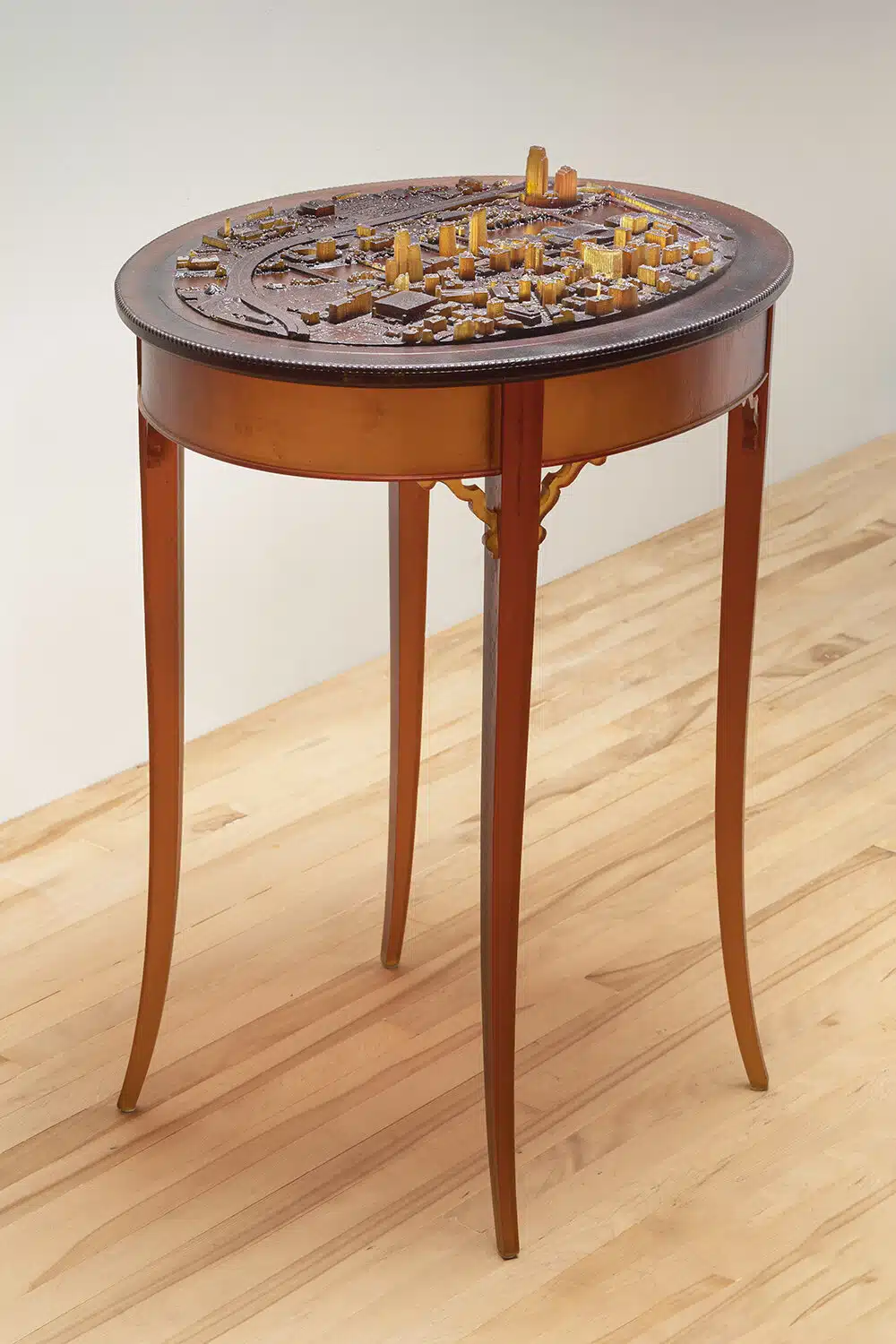
Recasting Grand Rapids
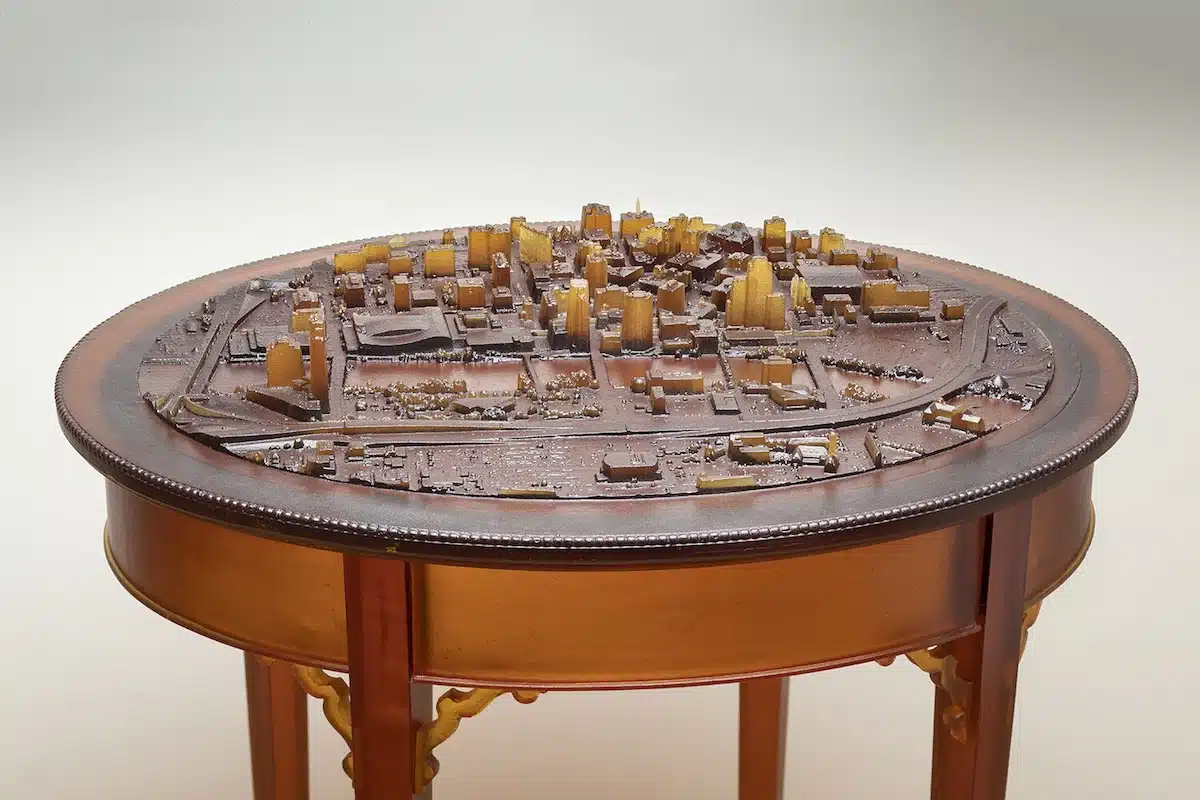
Recasting Grand Rapids (detail)
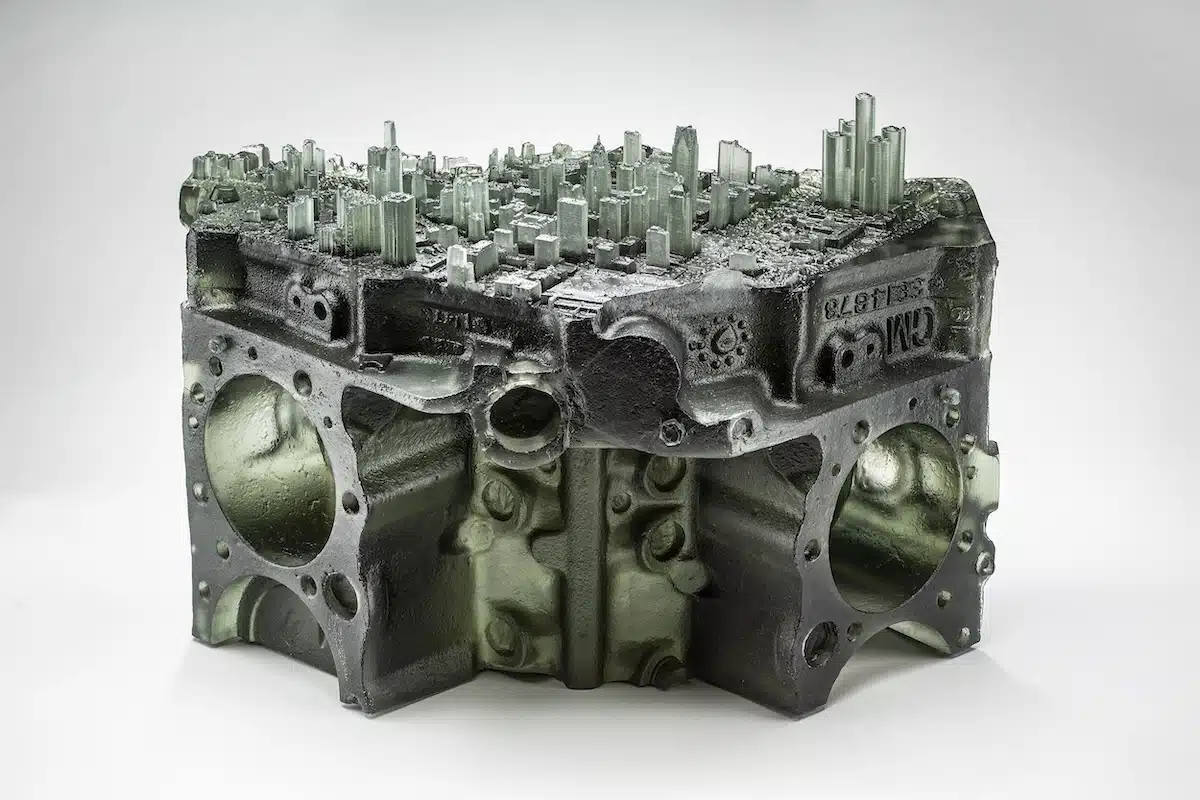
Recasting Detroit
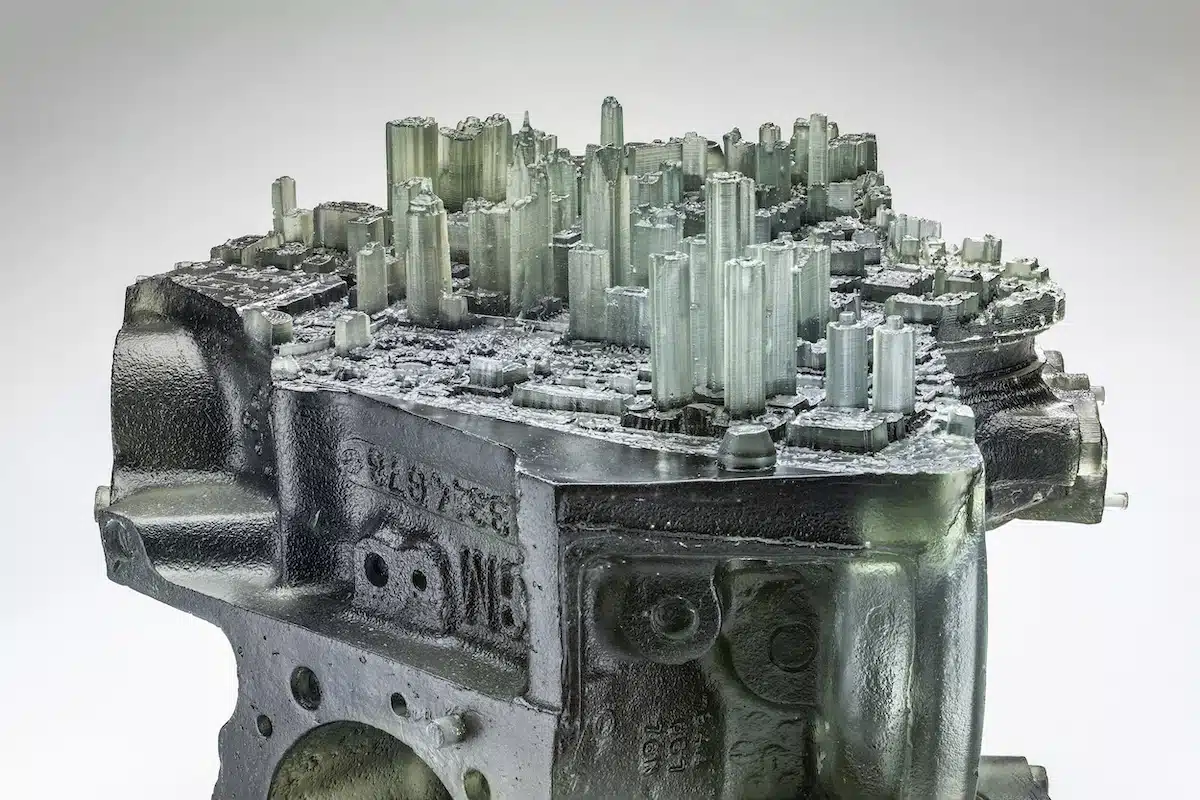
Recasting Detroit (detail)

Recasting Houston

Recasting Houston (detail)
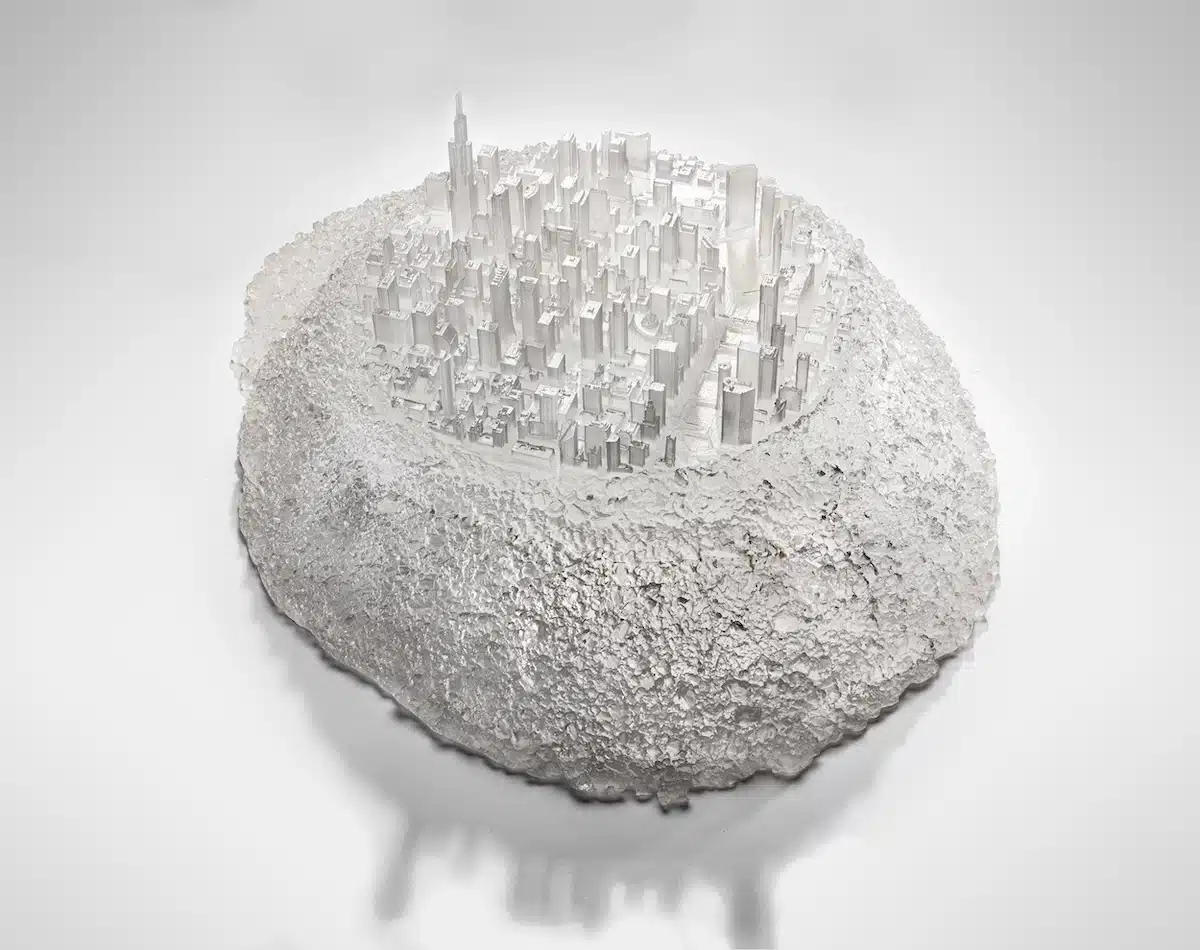
Recasting Chicago
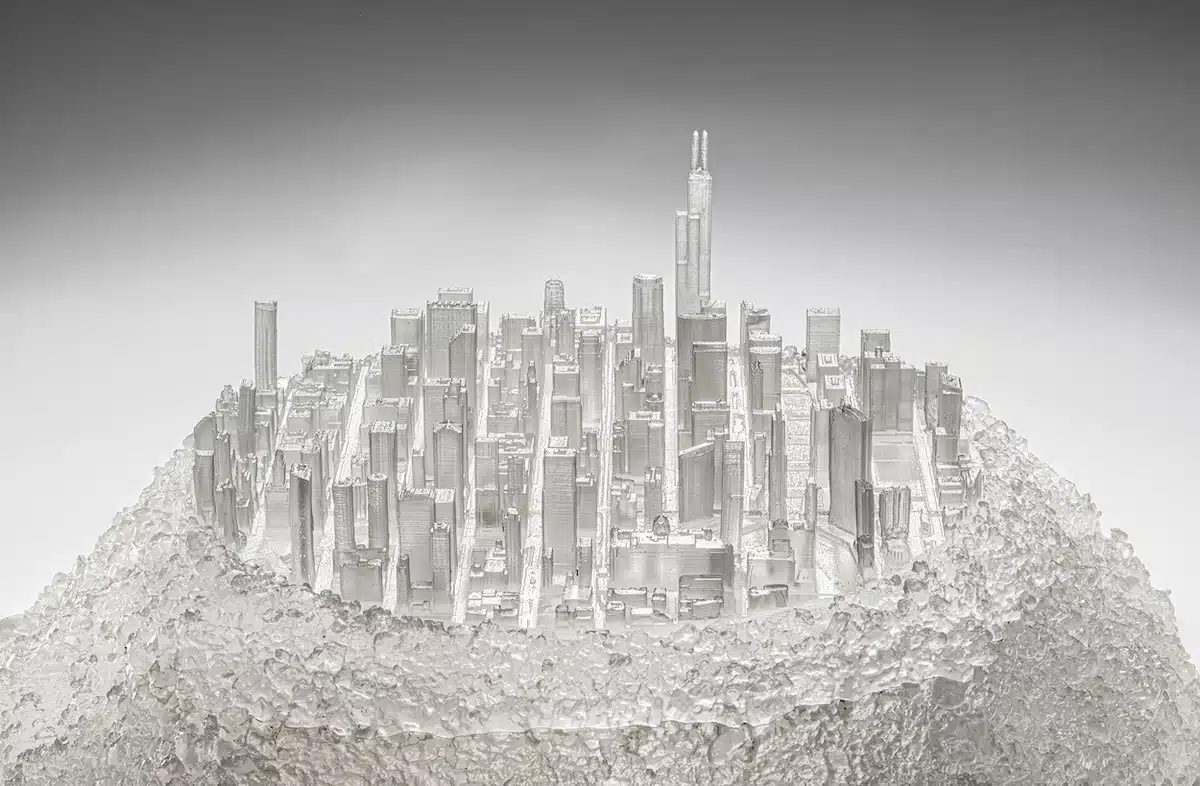
Recasting Chicago (detail)
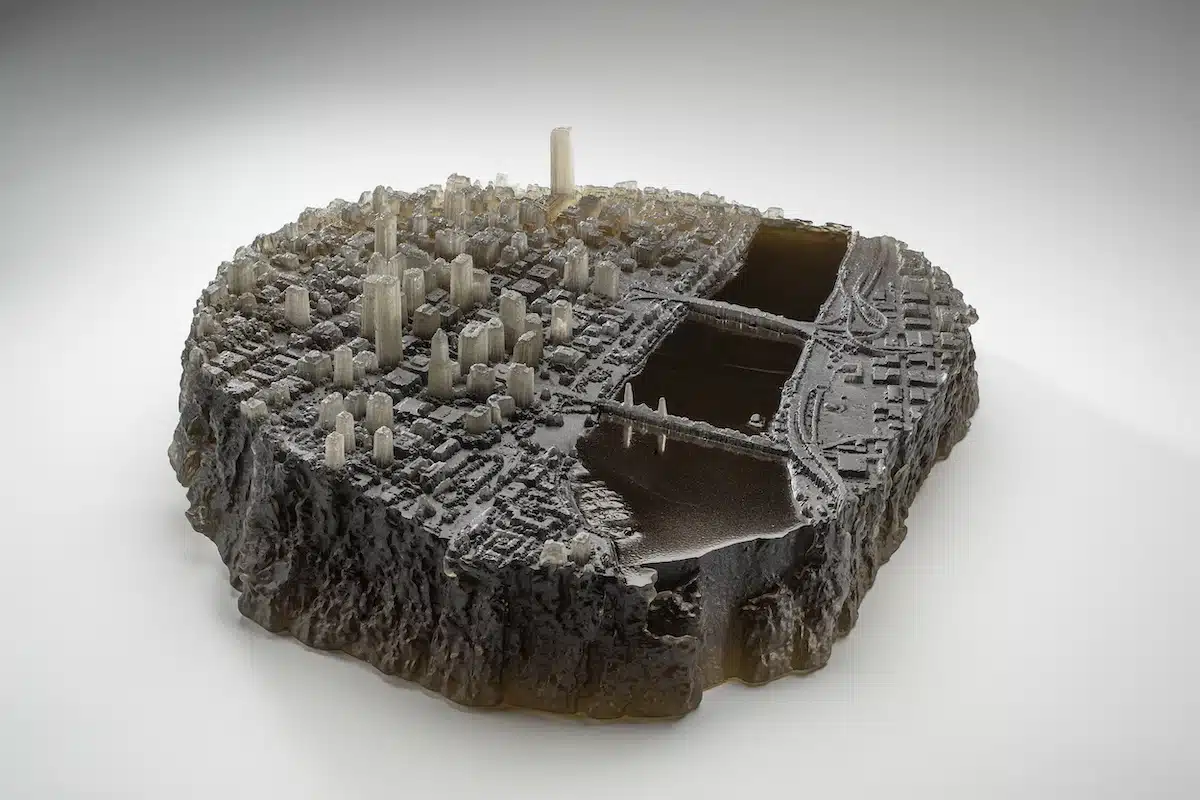
Recasting Portland
Each glass sculpture represents stories of migration and the fragility of urban populations.
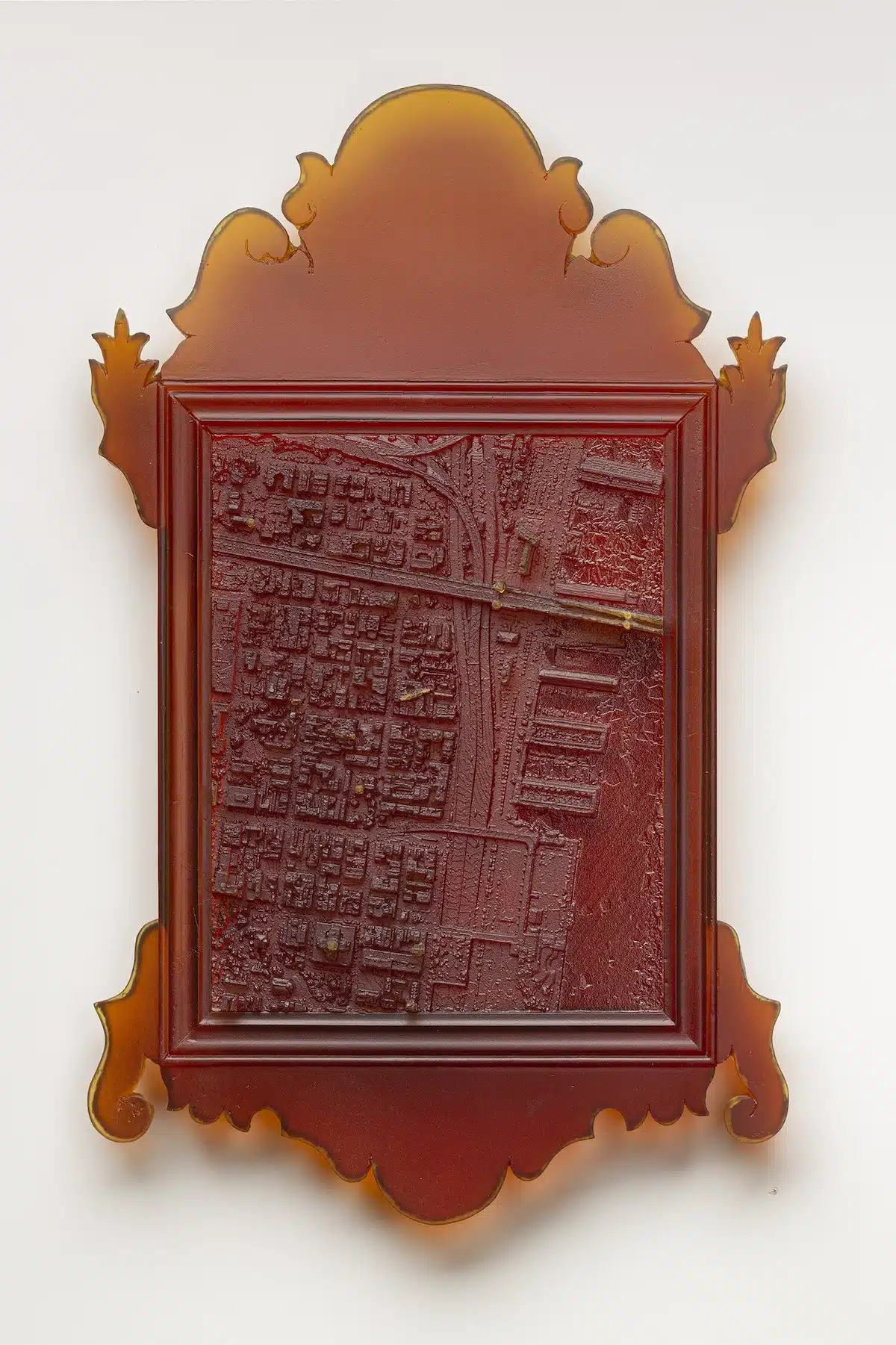
Recasting Philadelphia
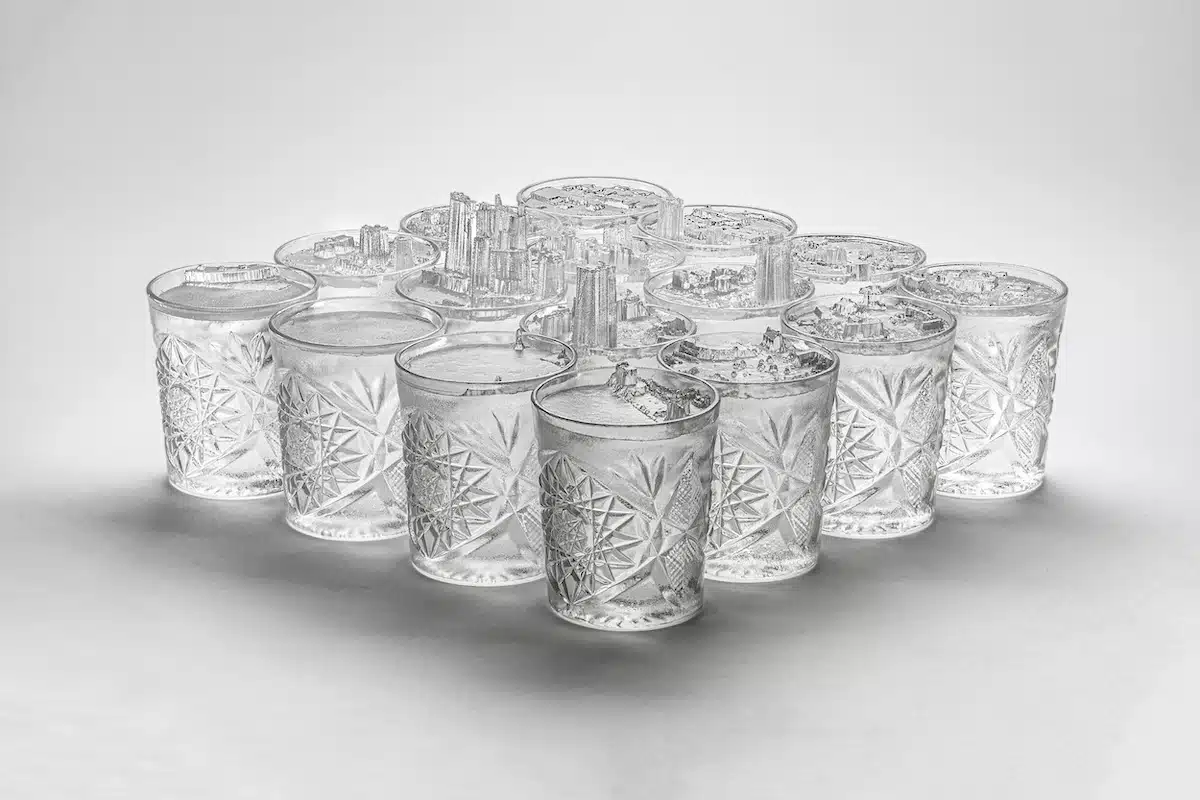
Recasting Toledo
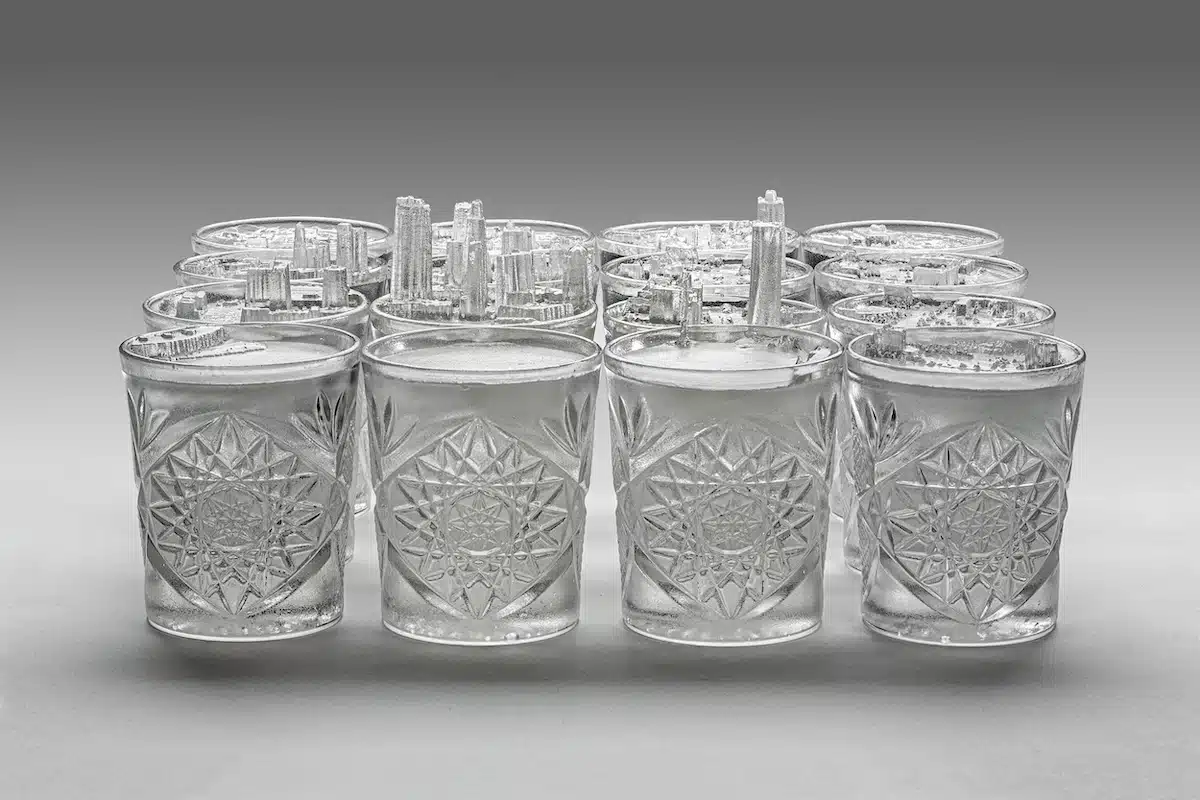
Recasting Toledo (detail)
